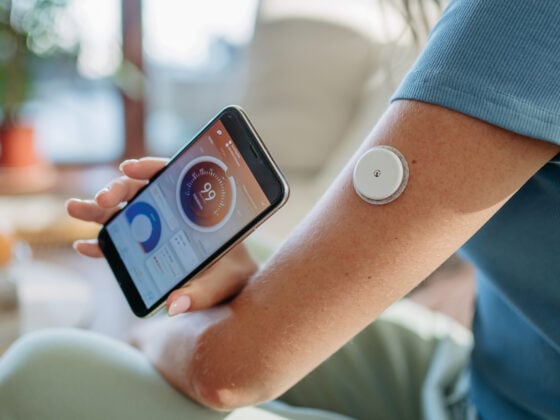The EADV Congress is the annual international congress for the latest scientific advances and research in dermatology and venereology. The diverse scientific program brings together healthcare professionals, organizations and industry from around the world to transform the field.
A recent study has revealed that non-melanocytic skin cancer (NMSC) causes more deaths worldwide than melanoma, the more serious form of skin cancer. The researchers also believe that NMSC is under-recognized and that the actual impact of this disease may be even greater than assumed. Prof. Thierry Passeron, lead author of the study, explains: “Although NMSC is less likely to be fatal than melanoma, the prevalence is strikingly higher. In 2020, NMSC accounted for 78% of all skin cancer cases, resulting in over 63,700 deaths. In contrast, melanoma caused an estimated 57,000 deaths in the same year. The significantly higher incidence of NMSC has therefore led to a greater overall impact.” In addition, NMSC is often underreported in cancer registries, making it difficult to understand the true burden.
However, the researchers not only looked at the overall burden of skin cancer, but also identified specific population groups at higher risk of the disease, including people who work outdoors, organ transplant recipients and people with the skin disease xeroderma pigmentosum (an inherited extreme sensitivity to the sun). The study, which used data from the World Health Organization’s International Agency for Research on Cancer (WHO), found a high incidence of skin cancer in fair-skinned and older populations from the US, Germany, the UK, France, Australia and Italy. But even countries with a high proportion of dark phenotypes were not immune to the risk of dying from skin cancer, as the 11,281 registered deaths in Africa show. In 2020, there were almost 1.2 million reported cases of NMSC worldwide compared to 324,635 cases of melanoma. The majority of skin cancers are non-melanomas, i.e. a group of cancers that develop slowly in the upper layers of the skin, the most common of which are basal cell carcinomas and squamous cell carcinomas. Compared to melanoma, a type of skin cancer that develops in the melanocytes, NMSC is less likely to spread to other parts of the body and can be treated more easily.
Passerson concluded: “We need to spread the message that not only melanoma but also NMSC can be deadly. It is important to point out that people with melanin-rich skin are also at risk of dying from skin cancer. Effective strategies need to be implemented to reduce the number of deaths associated with all types of skin cancer.”
However, the study found no consistent evidence that more dermatologists per capita could reduce the mortality rate. Surprisingly, countries such as Australia, the United Kingdom and Canada, where there are fewer dermatologists, had a low mortality-to-incidence ratio. It is therefore necessary to investigate in more detail what strategies these countries use to reduce the impact of skin cancer. This success can be explained in part by the fact that other healthcare professions, such as general practitioners, are also involved in the detection and treatment of this disease. Worldwide, there is still great potential to strengthen the role of GPs and other healthcare professionals in this process and to train them to recognize suspicious lesions at an early stage. The expert concluded: “Skin cancer is preventable and treatable, so we need to do more to ensure we stop the progression of this disease as early as possible to save lives.”
Artificial intelligence in early detection
Skin cancer detection using artificial intelligence (AI) software has improved rapidly, new research shows, with the latest software achieving a 100% detection rate for melanoma. In one study, 22,356 patients with suspected skin cancer were examined over a period of 2.5 years. In addition to a sensitivity of 100% (59/59 identified cases) in the detection of melanoma, the new software correctly detected 99.5% (189/190) of all skin cancers and 92.5% (541/585) of precancerous lesions. Although the data is extremely encouraging, the research team points out that AI should not be used as a stand-alone detection tool without the support of a consultant dermatologist. Of the 190 basal cell carcinomas, a single case was overlooked, which was later identified during a second examination by a “safety net” of dermatologists. This shows once again the importance of appropriate clinical monitoring of AI.
Congress: European Academy of Dermatology and Venerology (EADV)
Further reading:
- Salah S, et al: A comprehensive analysis of global skin cancer incidence and mortality with a focus on dermatologist density and population risk factors. Presented at the EADV Congress 2023; October 11, 2023; Berlin, Germany.
- NHS. Overview: Skin cancer (non-melanoma). (Last updated January 2020). Available at: www.nhs.uk/conditions/non-melanoma-skin-cancer (Accessed: September 2023).
- World Cancer Research Fund International. Skin cancer statistics. (Last updated March 2022). Available at: www.wcrf.org/cancer-trends/skin-cancer-statistics (Accessed: September 2023).
- Cancer.Net. Xeroderma pigmentosum. November 2022. Available at: www.cancer.net/cancer-types/xeroderma-pigmentosum (Accessed: September 2023).
- Premier Surgical: What’s the difference between melanoma and non-melanoma skin cancer? January 2016. Available at: www.premiersurgical.com/01/whats-the-difference-between-melanoma-and-non-melanoma-skin-cancer (Accessed: September 2023).
- Mayo Clinic: Melanoma. July 2023. Available at:
www.mayoclinic.org/diseases-conditions/melanoma/symptoms-causes/syc-20374884 (Accessed: September 2023). - Andrew K, et al: Continued Improvement of Artificial Intelligence in Identifying Skin Cancer (e poster). Presented at the EADV Congress 2023; October 12, 2023; Berlin, Germany.
- NHS. Overview: Skin cancer (non-melanoma). (Last updated January 2020). Available at: www.nhs.uk/conditions/non-melanoma-skin-cancer (Accessed: September 2023).
- Andrew K, et al: Continued Improvement of Artificial Intelligence in Identifying Skin Cancer ( Presented at the EADV Congress 2023; October 12, 2023; Berlin, Germany.
InFo ONCOLOGY & HEMATOLOGY 2023; 11(5): 24












